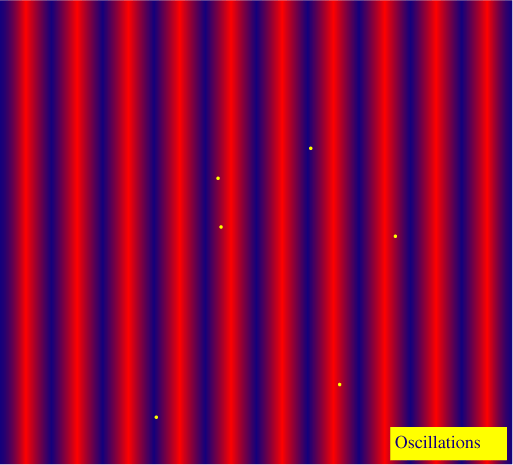
To better understand the formation of (angular) anisotropies from (spatial) inhomogeneities, let us start by reviewing the picture so far.
Photon pressure in a plane wave gravitational potential fluctuation causes a plane wave temperature variation across space that oscillates in time:

If we catch the oscillation at an extrema of the oscillation (blue-red phase) we see largish variations in the temperature across space. On the other hand, if we catch it at the zero of the oscillation, we see no variation at all (maroon). Since the frequency of the oscillations is directly proportional to the wavenumber (inverse length scale), there is a harmonic relationship between the wavenumbers that are caught at their extrema at any given time. We'll focus on one of these modes.